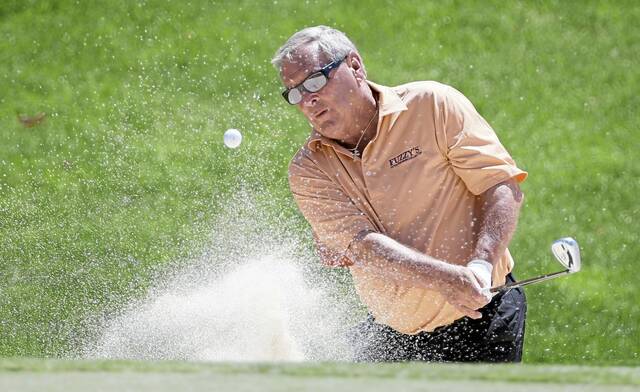Asked to name the toughest golf course he’d ever played, Dustin Johnson was quick with an answer.
“Probably this one,” he said Monday at Oakmont Country Club after finishing a U.S. Open practice round.
What’s the second hardest? He said that was a tougher question, but there was a clear divide in his mind between Oakmont and every other course.
“I’ve played some hard courses, but it all depends on the conditions,” Johnson said. “This one’s hard no matter what — soft, firm, windy, no wind.”
The historic course is hosting the U.S. Open this week for the first time since 2016, when Johnson won. The 40-year-old returned Monday to a course with some new wrinkles, but the conditions reminded him of nine years ago.
Rain affected the course then and now.
“It’s soft, which makes the fairways a little bit easier to hit and the greens a little bit easier to hold,” Johnson said. “But it plays longer, so you have longer clubs in. The conditions right now are similar. Hopefully it will be dry — we won’t get any more rain, and it will dry out a little bit by Thursday.”
That’s still to be seen.
Monday was the first of three practice days for the 156 golfers in the field. The tournament rounds are Thursday through Sunday, meaning the course can change significantly.
The course got more rain Monday afternoon, but weather forecasts hinted as some sunny days ahead.
Justin Thomas, who played nine holes, said it was clear Oakmont was softer than usual. But he said that doesn’t make the course any easier if you can’t find the fairway.
Thomas tied for 32nd at Oakmont in 2016.
“They’ve obviously gotten a lot of rain here the last couple weeks,” he said. “It’s still extremely challenging. It’s just ‘hit the fairway,’ and if you don’t hit the fairway, you’re just kind of trying to base (your decision) off of the lie.”
Thomas said he didn’t remember much about that 2016 tournament but agreed conditions felt similar.
“It’s very similar in the aspect of, it’s soft and the rough is extremely lush and thick,” he said.
Xander Schauffele wasn’t at Oakmont nine years ago but said he rewatched online video of the tournament. He took note how the softer greens were more receptive to iron shots, but that was before the course restoration two years ago added length to some holes.
“Anything close to par is what they want here,” Schauffele said. “The members absolutely love their property, and the members absolutely want it to be over par. I know what they’re rooting for.”
The winning score was 5-over when Oakmont hosted the U.S. Open in 2007. Rain certainly changes the strategy, but Schauffele said rough remains a big concern.
He pointed to hole No. 10 as an example.
“If you are in the rough, the way Oakmont plays, you can sort of hack something, if you’re courageous enough,” Schauffele said. “If you get the correct line and a couple of bounces, you could kind of turn what would be a nightmare into a decent situation. Right now, with it being soft, your ball is not going to really roll where it needs to.”
In a twist, Thomas said he thinks wet weather might improve the lie in Oakmont’s thick grass. But he quickly added that it also makes escape even harder.
“I have zero idea if there’s any kind of science or anything behind this,” Thomas said. “But just to me, it seems like when the rough’s wet, the ball will not sink all the way down to the bottom. It’s almost like the rough is a little heavier. But because of that, it can be harder to get out if it is wet.”
Thomas said soft fairways also called for longer clubs. He also pointed to hole No. 10 — a 461-yard par 4. On Monday, hitting driver off the tee was an option, knowing the shot wouldn’t get the usual roll on the wet fairway.
“If it just gets a little firm, you can hit a 4-iron down there to the same place,” Thomas said.
Johnson credited his driver for winning in 2016 when the course was similarly soft. He finished 4-under par after shooting a final-round 69 with two bogeys and three birdies.
He drove it straight and won.
“I hit a lot of fairways,” Johnson said. “That was the only reason I shot that well.”
He was one of only four golfers to finish in red numbers that year. There was a three-way tie for second at 1-under.
“Somehow, I figured out a way to get it under par,” Johnson said. “It was mostly the driving. Obviously even driving it in the fairway here, it’s still really difficult. But I hit a lot of good drives and a lot of good iron shots.”











